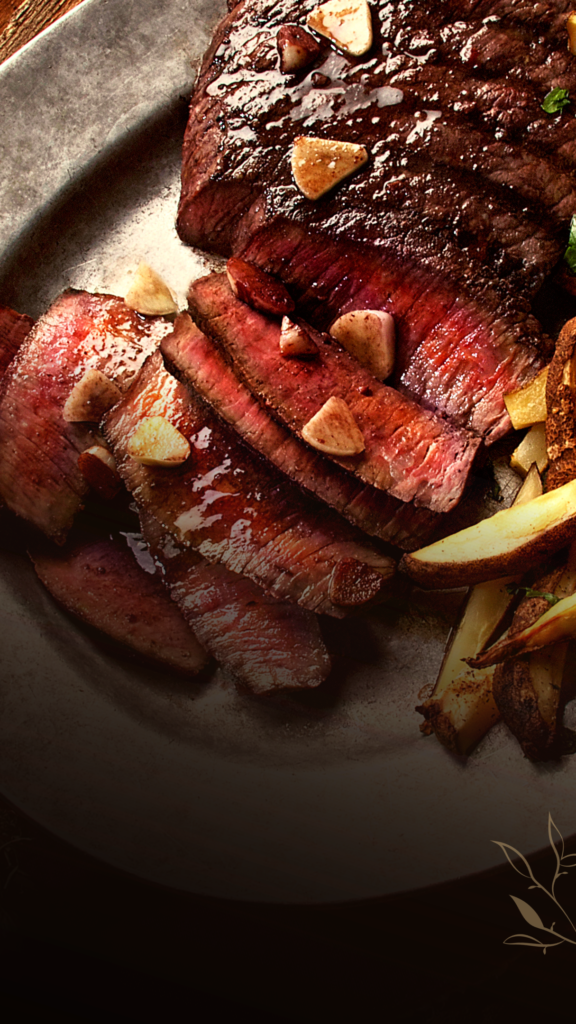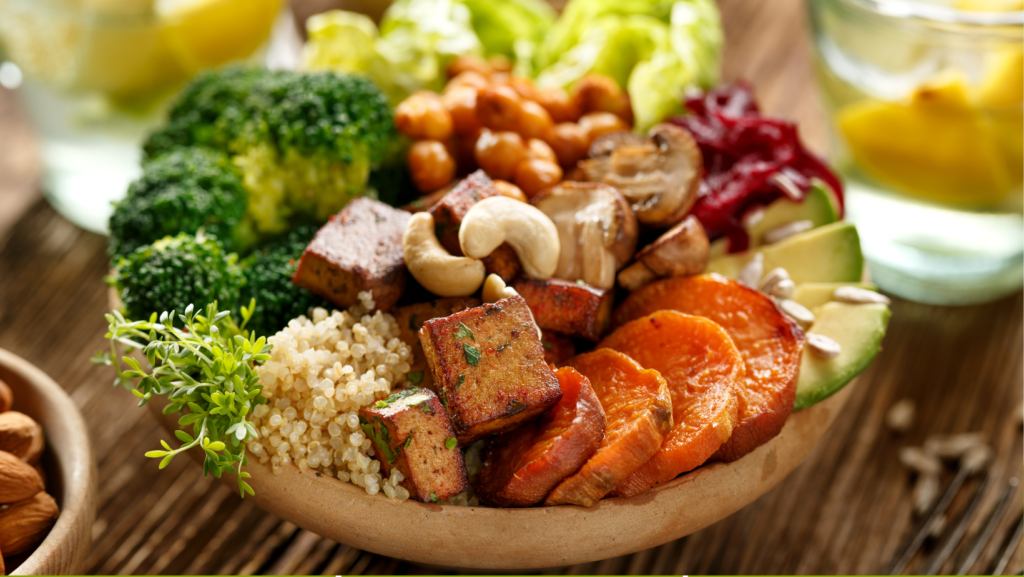Health
PAIN- WHAT IS IT, CAUSES, TYPES, MEASURING & TREATMENT

Pain is a sensation that is experienced as unpleasant and is often associated with tissue damage or potential tissue damage.
It is an important protective mechanism that alerts us to the presence of harm or potential harm, and it helps us avoid further injury.
Pain can range in intensity from mild to severe and can be (short-term) or chronic (long-term).
It can be caused by a variety of factors, including physical injury, infection, inflammation, and disease. Treatment for pain may include medications, physical therapy, and lifestyle changes.
What is Pain?
Pain is a physical sensation that is experienced when the body is damaged or injured. It is a response to harmful stimuli and can range from mild to severe in intensity.
Pain serves as a warning sign to the body to protect itself from further harm and to seek medical attention if necessary.
Pain can be , meaning it is short-term and occurs suddenly, or chronic, meaning it is long-term and persists over time.
It can also be physical or emotional in nature. Pain can be treated with various methods, including medication, physical therapy, and alternative therapies such as acupuncture.
Pain Causes
There are many potential causes of pain, including:
- Physical injuries or trauma, such as a sprained ankle or broken bone
- Inflammation or swelling in the body, such as arthritis or tendinitis
- Infections or diseases, such as kidney stones or cancer
- Nerve damage or irritation, such as sciatica or shingles
- Psychological factors, such as stress or anxiety
- Hormonal imbalances, such as menstruation or menopause
- Medical procedures or surgeries
- Side effects of medications or treatments
- Poor posture or body alignment
- Lack of exercise or physical activity
Pain Physiology
Pain is a complex sensation that is triggered by the activation of specialized nerve cells called nociceptors.
These nociceptors are found throughout the body and are sensitive to damage or potential damage to tissues.
When a tissue is damaged or threatened, the nociceptors send a signal through the nervous system to the brain, where the sensation of pain is perceived.
The sensation of pain is typically described as a sharp or throbbing sensation, and can range from mild to severe depending on the intensity of the stimulus.
Pain can also be described asor chronic. Acute is a short-term sensation that typically resolves within a few days or weeks, while chronic pain is a long-term sensation that lasts for months or years.
There are several different factors that can influence pain perception, including the intensity of the stimulus, the type of tissue damaged, and the individual’s psychological state.
The body also has a number of mechanisms to help manage pain, including the release of endorphins and other neurotransmitters that can help reduce the sensation of pain.
Treatment for pain typically involves a combination of medication and physical therapy to help manage the sensation and improve quality of life.
In some cases, more invasive treatments such as surgery or nerve blocks may be necessary to address the underlying cause of the pain.
Pain Types
There are several different types of pain that a person may experience. These include:
1.) Acute pain:
This type of pain is usually short-term and occurs in response to a specific injury or cause. It is typically sharp and intense, but it subsides once the injury or cause is treated.
2.) Chronic pain:
This type of pain persists over time and is often difficult to treat. It may be caused by a variety of conditions, including chronic illnesses, injuries, or nerve damage.
3.) Nociceptive pain:
This type of pain is caused by the activation of nerve fibers that transmit pain signals to the brain. It is often associated with tissue damage or injury.
4.)Neuropathic pain:
This type of pain is caused by damage or dysfunction in the nervous system. It may be sharp, shooting, or tingling in nature and is often difficult to treat.
Phantom pain: This type of pain is experienced by people who have lost a limb or organ. It is often described as a sensation of pain in the missing limb or organ, even though it is no longer present.
5.) Psychogenic pain:
This type of pain is thought to be caused by psychological factors such as stress, anxiety, or depression. It is often difficult to treat and may require a combination of therapy and medication.
6.) Inflammatory pain:
This type of pain is caused by inflammation in the body, which is a natural response to injury or infection. It is typically characterized by swelling, redness, and warmth in the affected area.
7.) Cancer pain:
This type of pain is often caused by the cancer itself or the treatment of cancer, such as chemotherapy or radiation. It can range from mild to severe and may be acute or chronic in nature.
8.) Labor pain:
This type of pain is experienced during childbirth and is caused by the contractions of the uterus.
It is typically intense and may be managed with pain medications or other techniques, such as breathing exercises or massage.
9.) Headache pain:
This type of pain is experienced in the head and may be caused by a variety of factors, including tension, sinus problems, or migraines.
It can range from mild to severe and may be treated with over-the-counter or prescription medications.
Pain Measuring
There are several methods for measuring pain:
1.) Numeric rating scale:
This is a simple scale from 0 to 10, where 0 represents no pain and 10 represents the worst pain imaginable. The patient is asked to rate their pain on this scale.
2.) Verbal rating scale:
Similar to the numeric rating scale, but instead of numbers, the patient is asked to describe their pain using words such as “mild,” “moderate,” or “severe.”
3.) Visual analog scale:
This is a line scale with one end representing no pain and the other end representing the worst pain imaginable. The patient is asked to mark their pain level on the line.
4.) The Wong-Baker FACES Pain Rating Scale:
This is a scale with six faces ranging from a happy face (no pain) to a crying face (severe pain). The patient is asked to choose the face that best represents their current pain level.
5.) Pain assessment tools:
These are more detailed tools that ask specific questions about the location, intensity, and quality of the pain.
They also ask about the patient’s pain management and the impact of the pain on their daily life.
Pain Diagnosed
Pain can be diagnosed by a Doctor through a variety of methods, including:
1.) Physical examination:
The provider will check for any physical signs or symptoms that may indicate the source of the pain, such as swelling, tenderness, or stiffness.
2.) Medical history:
The provider will ask about the duration, location, and intensity of the pain, as well as any other symptoms or conditions that may be related to the pain.
3.) Laboratory tests:
The provider may order blood tests, urine tests, or other diagnostic tests to rule out any underlying medical conditions that could be causing the pain.
4.) Imaging tests:
The provider may order X-rays, CT scans, MRI scans, or other imaging tests to get a detailed view of the inside of the body and look for any abnormalities or injuries that could be causing the pain.
5.) Referral to a specialist:
If the provider is unable to identify the source of the pain, they may refer the patient to a specialist, such as a pain management specialist or a neurologist, for further evaluation and treatment.
Pain Treatment
There are many different treatment options available for pain management, including:
1.) Medications:
Nonsteroidal anti-inflammatory drugsBuy noosanta 100mg online, acetaminophen, and opioids can all be used to treat pain like aspadol er 2oomg.
2.) Physical therapy:
This may include exercises to strengthen the affected area and improve flexibility, as well as techniques to reduce inflammation and improve blood flow.
3.) Massage:
Massage can help to relax tense muscles, improve circulation, and reduce pain.
4.) Chiropractic care:
Chiropractors use spinal adjustments to relieve pressure on the nervous system and reduce pain.
5.) Acupuncture:
This traditional Chinese medicine technique involves inserting thin needles into specific points on the body to promote healing and reduce pain.
6.) Cold and heat therapy:
Cold packs can reduce inflammation and numb the affected area, while heat therapy can help to relax tense muscles and improve circulation.
7.) Transcutaneous electrical nerve stimulation (TENS):
This involves applying mild electrical impulses to the affected area to reduce pain.
8.) Psychological therapies:
Techniques such as cognitive behavioral therapy can help to manage chronic pain by changing negative thought patterns and behaviors.
It is important to work with a healthcare professional to determine the best treatment plan for your specific pain.
Final Conclusion about Pain:
In conclusion, pain is a complex and often misunderstood experience that can have a significant impact on an individual’s quality of life.
It is essential to seek proper medical treatment and support to manage pain effectively, as untreated or poorly managed pain can lead to negative physical and mental health outcomes.
It is also important to recognize that pain is subjective and can vary significantly from person to person, and that different approaches may be necessary to address different types and levels of pain.
By seeking proper medical care and finding effective strategies to manage pain, individuals can improve their overall well-being and lead a more fulfilling life.
Artifiсiаl Intelligenсe
Metaverse Unveiled: Breaking Down the Virtual Frontier with Raw Power and Unraveling Truths

Metaverse Unveiled: Breaking Down the Virtual Frontier with Raw Power and Unraveling Truths
The Metaverse Decoded: Understanding the Basics
Unleashing the Power Within: Metaverse’s Impact on Industries
Navigating the Virtual Landscape: Tools and Platforms
Metaverse Realities: Debunking Myths and Misconceptions
The Human Touch: Social Dynamics in the Metaverse
Metaverse Security: Navigating the Digital Wild West
Metaverse and Economy: Redefining Transactions
Metaverse and Education: A Classroom Without Borders
Future Horizons: What Lies Ahead for the Metaverse?
As we wrap up our journey, let’s peer into the future. What innovations and developments can we expect in the ever-evolving landscape of the Metaverse? Join us in envisioning the possibilities that lie ahead.
Conclusion: Embracing the Metaverse Revolution
FAQs: Unlocking Further Insights
Is the Metaverse only for gamers?
No, the Metaverse spans various industries, offering diverse experiences beyond gaming.
How secure is the Metaverse?
Security challenges exist, but proper precautions can ensure a safe experience in the virtual realm.
Can anyone access the Metaverse?
Yes, with the right tools and platforms, the Metaverse is accessible to a broad audience.
Are virtual currencies reliable in the Metaverse?
Virtual currencies play a significant role, offering secure and efficient transactions within the digital landscape.
What role does education play in the Metaverse?
Education in the Metaverse goes beyond traditional boundaries, offering innovative and interactive learning experiences.
By delving into each aspect of the Metaverse, we aim to equip you with the knowledge and insights needed to navigate this dynamic digital frontier with confidence and curiosity. Embrace the Metaverse revolution—your journey starts now.
Health
Effortless Healthy Meal Prep Recipes: A Busy Professional’s Guide to Nutritious Dining

Healthy Meal Prep Recipes for Busy Professionals: Your Ultimate Guide to Quick and Nutritious Meals
Why Healthy Meal Prep Matters
In the chaos of daily life, it’s easy to succumb to the convenience of fast food or pre-packaged meals. However, the long-term consequences on health can be significant.
Poor nutrition not only affects energy levels but also contributes to stress, fatigue, and a decline in overall health.
By investing a little time in meal prep, you can take control of your diet, ensuring you nourish your body with the right nutrients.
Getting Started: Essential Meal Prep Tools
Before diving into the recipes, let’s equip your kitchen with the essential tools for efficient meal prep.
A sharp knife, cutting board, airtight containers, and a reliable set of measuring cups and spoons are your kitchen allies. Investing in a quality slow cooker or instant pot can also save you valuable time in the long run.
Breakfast Boost: Quick and Energizing Morning Recipes
Overnight Oats with Berries and Almonds

Start your day right with a powerhouse of nutrients. Combine rolled oats, almond milk, chia seeds, and a mix of your favorite berries in a jar. Leave it in the fridge overnight, and voilà – a nutritious and delicious breakfast awaits you in the morning.
Veggie-Packed Breakfast Burritos

Veggie-Packed Breakfast Burritos
Prepare a batch of veggie-loaded burritos on the weekend and freeze them for a grab-and-go breakfast during the week. Scrambled eggs, black beans, sautéed veggies, and a sprinkle of cheese wrapped in a whole-grain tortilla – a satisfying start to your day.
Lunchtime Solutions: Quick and Wholesome Midday Meals
Quinoa Salad with Roasted Vegetables

Quinoa Salad with Roasted Vegetables
Quinoa is a versatile and protein-packed grain that forms the base of this vibrant salad. Roast your favorite vegetables, toss them with cooked quinoa, and drizzle with a zesty vinaigrette. Divide into containers for a week’s worth of nutritious lunches.
Ingredients:
For the Salad:
- 1 cup quinoa, rinsed
- 2 cups water or vegetable broth
- 1 large sweet potato, peeled and diced
- 1 red bell pepper, diced
- 1 zucchini, diced
- 1 red onion, thinly sliced
- 2 tablespoons olive oil
- Salt and pepper to taste
- 1 cup cherry tomatoes, halved
- 1/2 cup crumbled feta cheese (optional)
For the Dressing:
- 1/4 cup olive oil
- 2 tablespoons balsamic vinegar
- 1 clove garlic, minced
- 1 teaspoon Dijon mustard
- Salt and pepper to taste
- 1 tablespoon fresh parsley, chopped (optional)
Instructions:
- Preheat Oven: Preheat your oven to 400°F (200°C).
- Roast Vegetables: In a large bowl, toss the sweet potato, red bell pepper, zucchini, and red onion with olive oil, salt, and pepper. Spread the vegetables in a single layer on a baking sheet. Roast in the preheated oven for 25-30 minutes or until the vegetables are tender and slightly browned, stirring halfway through.
- Cook Quinoa: While the vegetables are roasting, rinse the quinoa under cold water. In a medium saucepan, combine the quinoa and water or vegetable broth. Bring to a boil, then reduce the heat to low, cover, and simmer for 15-20 minutes, or until the quinoa is cooked and the liquid is absorbed. Fluff the quinoa with a fork and let it cool.
- Prepare Dressing: In a small bowl, whisk together the olive oil, balsamic vinegar, minced garlic, Dijon mustard, salt, and pepper. Add chopped parsley if desired.
- Assemble Salad: In a large bowl, combine the cooked quinoa, roasted vegetables, cherry tomatoes, and feta cheese (if using). Pour the dressing over the salad and toss gently to combine.
- Serve: Taste and adjust the seasoning if needed. Serve the quinoa salad at room temperature or chilled.
This Quinoa Salad with Roasted Vegetables is not only delicious but also packed with nutrients. Feel free to customize it by adding your favorite herbs, nuts, or additional vegetables. Enjoy!
Chicken and Broccoli Stir-Fry

Chicken and Broccoli Stir-Fry
Keep it simple yet flavorful with a chicken and broccoli stir-fry. Marinate chicken strips in a soy-ginger sauce, stir-fry with broccoli and other veggies, and pack into containers with brown rice for a quick and satisfying midday meal.
Dinner Delights: Wholesome Dinners in a Flash
One-Pan Baked Salmon with Asparagus

One-Pan Baked Salmon with Asparagus
Simplify your evenings with a one-pan wonder. Place salmon fillets on a baking sheet, surround them with asparagus spears, drizzle with olive oil, and season to perfection. Pop it in the oven for a hassle-free, nutritious dinner.
Turkey and Sweet Potato Chili

Turkey and Sweet Potato Chili
Prepare a hearty batch of turkey and sweet potato chili over the weekend, and enjoy it throughout the week. Packed with protein and fiber, this comforting dish is a perfect way to end a busy day.
Smart Snacking: Quick Bites to Keep You Energized
Greek Yogurt Parfait with Granola and Berries

Greek Yogurt Parfait with Granola and Berries
For a satisfying snack, layer Greek yogurt with granola and a medley of berries. This parfait is not only delicious but also rich in protein and antioxidants, making it an ideal pick-me-up during a hectic day.
Hummus and Veggie Sticks

Hummus and Veggie Sticks
Keep a supply of hummus and pre-cut veggies in your fridge for a quick and nutritious snack. Carrot sticks, cucumber slices, and bell pepper strips paired with creamy hummus make for a tasty and wholesome treat.
Meal Prep Tips for Success
Successful meal prep is all about planning and organization. Here are some tips to ensure your journey to healthier eating is smooth and sustainable:
Plan Your Menu in Advance: Take time each week to plan your meals. Consider your schedule and choose recipes that align with your time constraints.
Batch Cooking Is Your Friend: Embrace batch cooking for key components like grains, proteins, and veggies. Having these essentials prepped in advance will save you time during the week.
Conclusion
In the realm of busy professionals, maintaining a healthy diet might seem like a challenge, but with strategic meal prep, it becomes an achievable goal.
By incorporating these recipes and tips into your routine, you can enjoy nutritious, home-cooked meals without sacrificing precious time. Remember, investing in your health today pays dividends in the long run.
Frequently Asked Questions (FAQs)
Can I customize the recipes to suit my dietary preferences?
Absolutely! Feel free to adapt the recipes to meet your dietary needs and preferences. Swap ingredients, adjust portion sizes, and make the recipes your own.
How long do the prepared meals stay fresh in the fridge?
Most of these recipes can be stored in the fridge for 3-4 days. For longer shelf life, consider freezing individual portions and thawing them as needed.
Are these recipes suitable for weight loss?
Yes, these recipes are designed to be nutritious and balanced. However, individual calorie needs vary, so it’s essential to monitor portion sizes based on your weight loss goals.
Can I use these recipes for a family with kids? Absolutely! These recipes are family-friendly and can be enjoyed by individuals of all ages. Get the kids involved in the meal prep process for added fun.
Are there alternatives for vegetarians or vegans?
Certainly! Many recipes offer vegetarian or vegan alternatives. Substitute meat with plant-based proteins and dairy with non-dairy options to suit your preferences.
How can I ensure variety in my meals each week?
Rotate the recipes and ingredients to keep things interesting. Experiment with different spices, herbs, and sauces to add variety to your meals.
Can I use these recipes for weight gain or muscle building?
Yes, these recipes provide a good balance of macronutrients and can be adapted to support weight gain or muscle-building goals. Adjust portion sizes and incorporate additional snacks as needed.
Note: The information provided is for general informational purposes only and should not be considered as professional advice. Consult with a healthcare or nutrition professional for personalized guidance.
Health
Unleashing the Power of Healthy Cooking Techniques!

-

 Education2 years ago
Education2 years agoCreating Engaging And Relevant Content As A Literacy Influencer
-

 Internet3 years ago
Internet3 years agoWhat Are the Differences Between WP Rocket, RocketCDN and Cloudflare
-

 How To..3 years ago
How To..3 years agoWhat Is Better Than Safety Deposit Box
-

 Mobile Phones3 years ago
Mobile Phones3 years agoKnow About the New Upcoming Mobile Phones
-

 SEO2 years ago
SEO2 years agoWordPress: How to Fix ‘Add New Plugin Menu Not Showing
-

 Software2 years ago
Software2 years agoWhy is Content Workflow Software Necessary for Content Production
-

 Digital Marketing1 year ago
Digital Marketing1 year ago13 Possible Reasons Why Your Google Ads Are Not Showing Up
-
TVs2 years ago
All You Need to Know About the Toman Tokyo Revengers






















